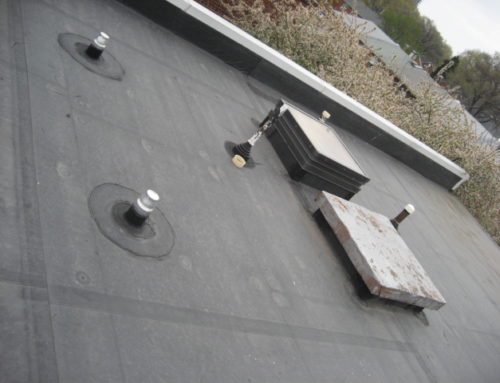Usually people find out their roof is leaking when water comes in the home. But did you realize that if you stand in your home right under the drip, you might be nowhere near the source of the water? Water has an uncanny way of traveling a long distance before it enters the home in some situations, so you can’t count on the drip being near the place the water is showing up.
The main place that roofs develop leaks is anywhere there are penetrations of the roof. Like vents, chimneys, dormers or anything else coming up through the roof. If you can get into your attic, you can take a flashlight and look for water infiltration or damage around points of penetration first. You might see black streaks, mold or damp areas inside the roof. While it does happen that uninterrupted areas of shingles may develop leaks, especially in our climate with the hail and high winds, it is less common.
Finding a Leak by Simulating a Rainstorm
I don’t recommend that most homeowners do this unless they or someone they know has roofing or construction experience, but you can look for a leak by having someone take a hose up on the roof while you watch underneath. Have them run a steady stream of water on the roof, starting with these penetration points. Set up a pattern of saturation, like the upper side of a penetration point, then the left, then the right, then below that point. Let the hose run for a few minutes in one point before moving it. By taking your time, you allow the water time to work its way through the leak, travel and then finally make an appearance inside the roof.
Even with roofing experience, this is a risky activity. Since our inspections are free, you are much better off having us come as soon as you see any sign of a leak. You’ll not only get the information you want on where the leak is, you’ll also get a written quote for repairs.
When You Buy, Ask About the Roof!
One of the first things you definitely want to do when you buy a home is ask how old the roof is and find out if there is any documentation on what roofing materials were used. Different materials are expected to last different lengths of times and these vary greatly. And there are some other factors that influence the life span of your roof other than just the original materials used. Lighter colored roofs reflect more light and absorb less so it may age more slowly. A steeply pitched roof may absorb less abuse from hail or windblown materials.
Asphalt roofs will last between 15 and 20 years but there are multiple grades of asphalt tile so that is another factor. By knowing which type of tile was used, you can predict its lifespan more accurately.
Metal roofs can last between 20 and 40 years, depending on the quality. Wood shingles (not many of these in our area) need more maintenance to last 20 years.
If you have a tree that overhangs your roof, that will create more wear and tear from debris falling on the roof.
As always, if you have any questions about the soundness of your roof or leaks, call us any time. (314) 825-7663





